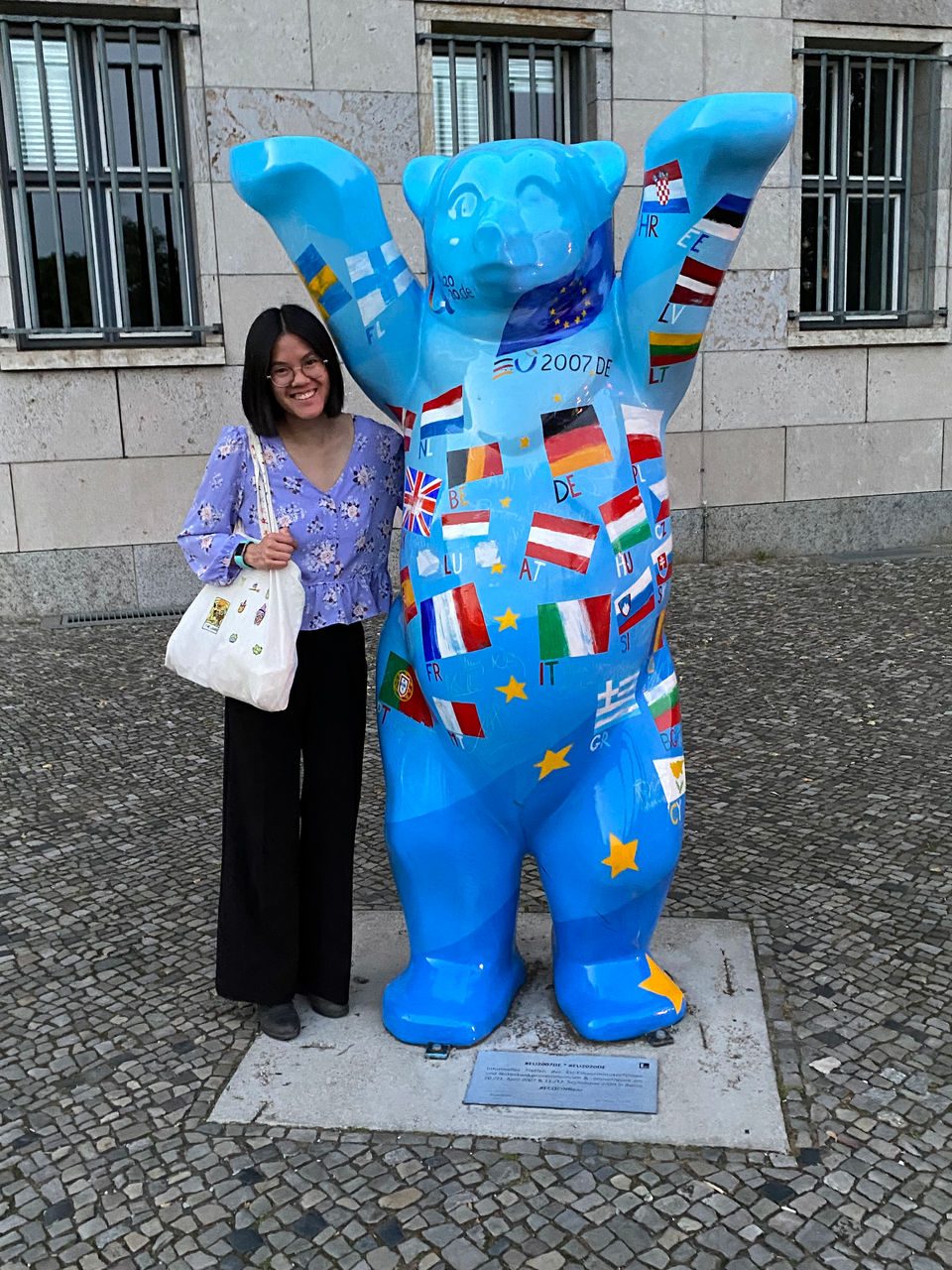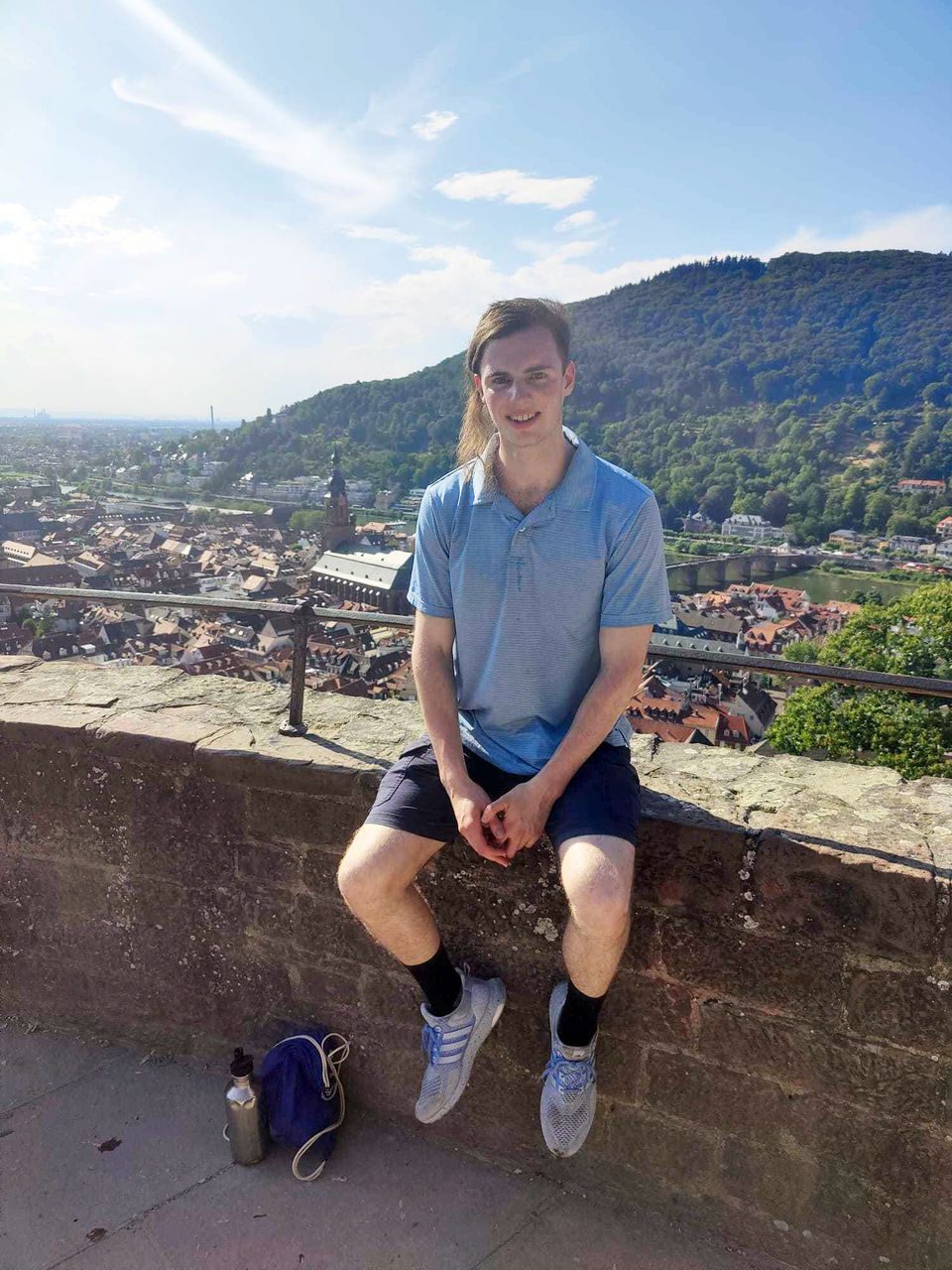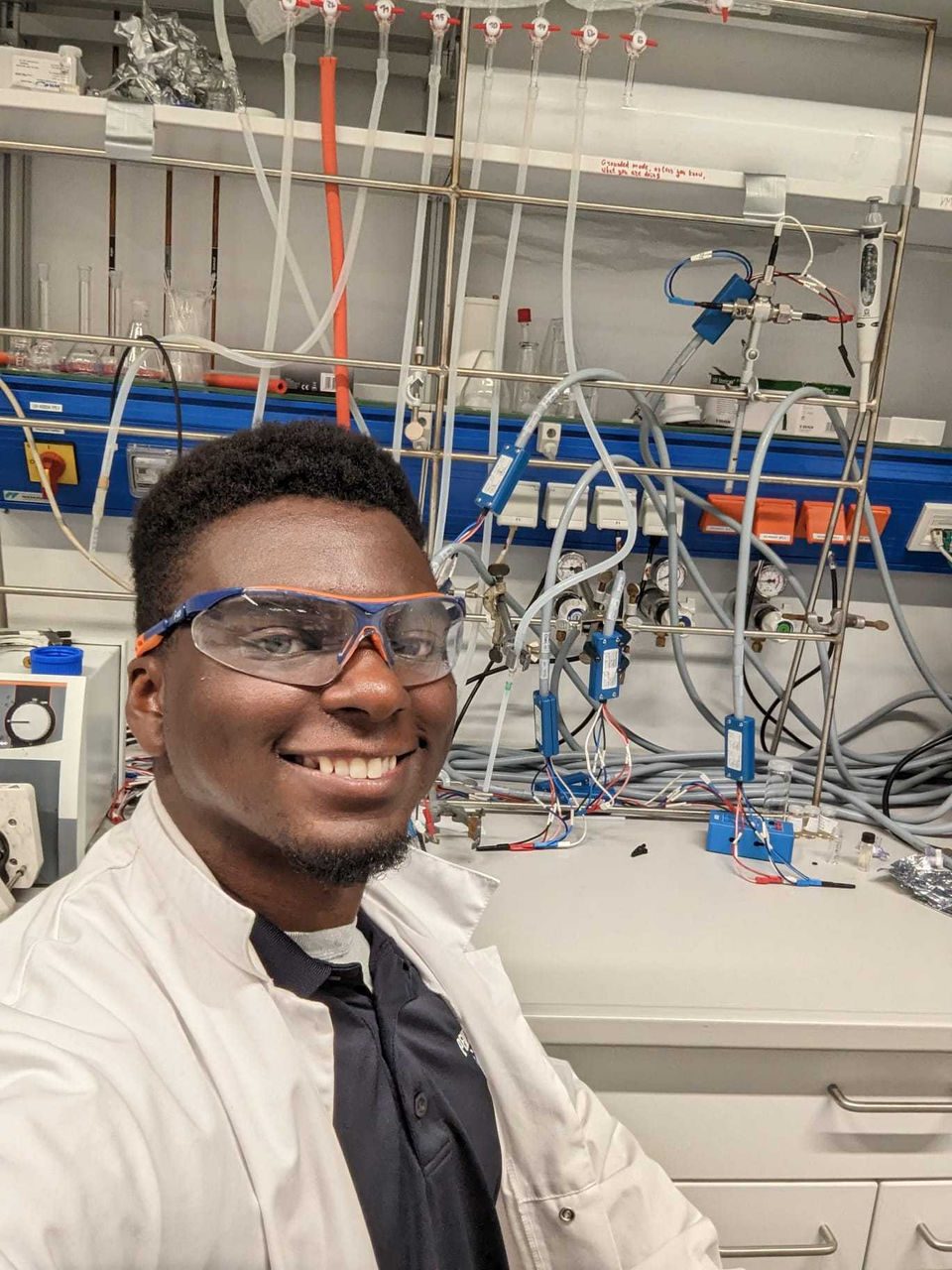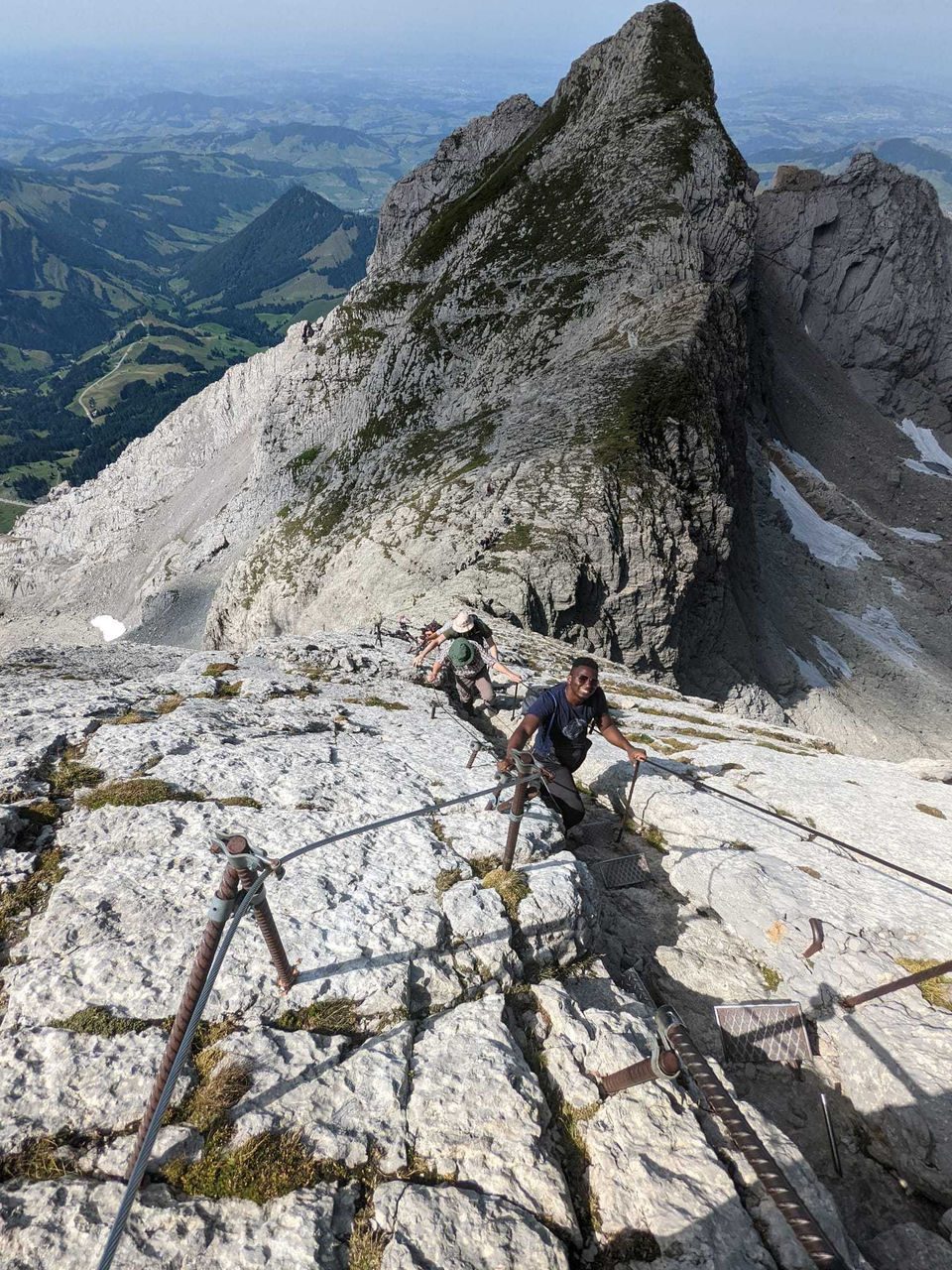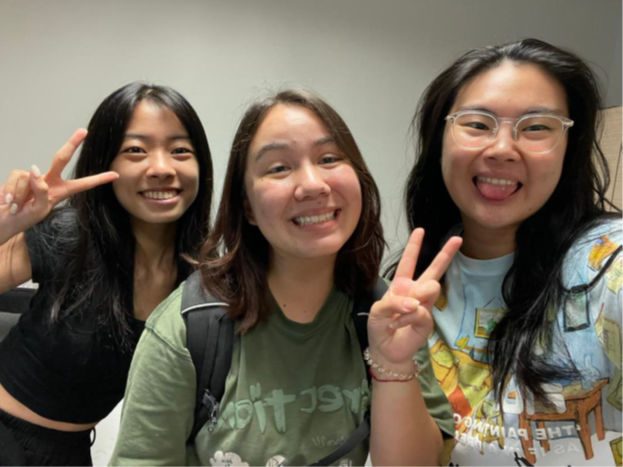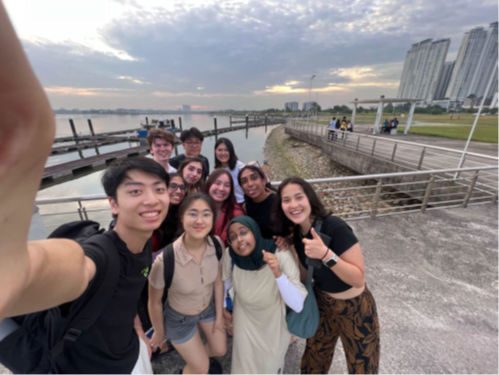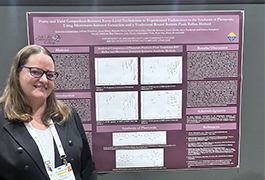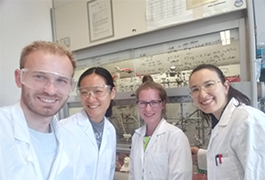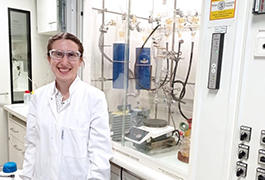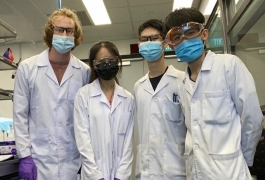Being in a Different Country Changed How These Fellows See Their Future in Chemistry
Doing research without the interference of classes is a unique experience. But when you had a layer of being immersed in another country, there is a lot to write home about. That was the case for the most recent cohort of U.S. students in the ACS International Research Experiences for Students (IRES) program, a summer research program that gives undergraduate students the opportunity to work at universities and private research centers in Singapore and Germany .
Here is what some of the 2023 IRES fellows students had to say about the impact of experiencing a new cultural and scientific setting.
Social side of science
Fellow: | Emily Harasin |
Projected graduation date: | May 2024 |
Home institution: | Ohio University in Athens, Ohio |
Host institution: | Helmholtz-Zentrum Hereon in Geesthacht, Germany |
Research focus: | Synthesis of triblock copolymers via blue light-induced iniferter reversible addition-fragmentation chain transfer (RAFT) polymerization |
I interned at Helmholtz-Zentrum Hereon in Geesthacht, Germany, which is about an hour from Hamburg. Though I traveled throughout Germany and even ventured out to other countries, my favorite parts of the summer occurred in my day-to-day life in Geesthacht. From my experience both in and outside of the workplace, I gained new insights about the world and myself.
Everyone I met at Helmholtz-Zentrum Hereon was welcoming, and I enjoyed going to work every day for the science and for the people. Eating lunch with others from the institution was a great way to improve my conversational German skills. Often, people would bake cakes for birthdays or other events, which fostered a strong sense of community.
While I have researched and synthesized polymers at my home institution, I knew almost nothing about RAFT polymerization prior to this experience. My mentor was very kind and patiently taught me the theory behind the research so that I could understand the chemistry behind the experiment. There was a slight learning curve at the beginning of the summer as I started running reactions, but after a few repetitions of experiments, I could successfully produce polymers independently. As the summer went on, I could test some of my own hypotheses regarding optimization of the reaction system. From my time working at Helmholtz-Zentrum Hereon, I learned to think more scientifically about research and to apply the theory behind the experiment to problem-solve and explore further synthesis routes.
I lived in a guesthouse owned by my host institution, so everyone who lived there also worked at Helmholtz-Zentrum Hereon. There, I was exposed to many different people from different parts of the world. My favorite part about living there was learning about so many different cultures. Everyone was excited to share and compare their cultures and experiences. Occasionally, there would be group dinners where the entire house was invited to sample another country’s cuisine. We had intriguing conversations ranging from science to politics, and having such discussions expanded my global perspective and enhanced my understanding of my place in this world. Overall, I learned that despite borders and languages, there is a universal definition of being human and there are some things that connect us all.

Expanding knowledge and appreciation
Fellow: | Mitchell Kenny |
Projected graduation date: | June 2025 |
Home institution: | Oregon State University in Corvallis, Oregon |
Host institution: | University of Kiel (CAU Kiel) in Kiel, Germany |
Research focus: | Synthesis and characterization of new Fe-MOFs using flexible linker molecules |
I spent 12 weeks at the University of Kiel expanding my knowledge of metal-organic frameworks (MOFs). This started with exploratory syntheses looking for new structures (we may have found two). I quickly began learning the group’s high-throughput workflow, which has helped me be more efficient at work. I also learned, during coffee breaks and Friday nights, the great German trick card game Doppelkopf, which I have successfully introduced to my group in the US.
The city of Kiel is comparably walkable if not slightly more than my hometown of Portland, OR, and the public transportation systems are about equal. The public transportation infrastructure is amazing all over Germany, however the high-speed train network connecting the entire country has various delays that cascade into each other and apparently this is normal.
But Heidelberg! There is simply nothing like the old town of the city in the evening, nestled in a river valley with a castle in the background, bustling shops inside rows and rows of classical European architecture. We were there on one of three nights a year that they light fireworks from the castle and the bridge to celebrate the burning down of the castle, and we watched them from the hill opposite the castle (in a sheep pasture just below Philosopher’s Way). Heidelberg also contains the only LAMY (famous German fountain pen company) store in the world; the LAMY 2000 I bought from them is beautiful and likely to last a lifetime.
Unfortunately, the summer did end, and I was removed from Kiel, but I would like head back to the same research group for graduate school because of my experience there.
Take matters into your own hands
Fellow: | Kyron Thomas |
Projected graduation date: | May 2024 |
Home institution: | Louisiana State University in Baton Rouge, Louisiana |
Host institution: | Friedrich Schiller Universität Jena in Thuringia, Germany |
Describe your research project in 1 or 2 sentences: | The construction and characterization of self-healing semi-organic zinc polymer batteries |
IRES was quite an interesting experience. Growing up in Louisiana, I was used to flat or otherwise swampy landscapes. Seeing the hilly, green, mountainous landscape of Germany was a huge departure from what I was used to. The Germans certainly know how to appreciate nature. Every house I walked by had a gorgeous garden with beautiful plants, flowers, fruits, and vegetables. The country is truly gorgeous in the summer.
The architecture was completely different as well. There’s so much personality in German architecture! Even the new buildings are designed to fit in with the overall theme, so the cities feel incredibly cohesive and artistic. Everywhere you look seems like it was designed to be in a painting.
This was also my first experience being somewhere with a vastly different culture from my own. Although my lab was welcoming, it was quite difficult to infiltrate the social circles of the native Germans as they would prefer to speak German with one another. Although I learned German for two years before the program, the conversation was simply too fast-paced for me to contribute meaningfully.
As a result, most of my bonding with native Germans came from cornering one of them and forcing them to engage in one-on-one conversation with me. You really have to hone your speaking skills to communicate effectively in an environment where English is most people’s second or third language. I learned to speak more deliberately and direct.
The German food is quite tasty, but restaurants that serve German food are also some of the most expensive ones. Instead of eating out, I learned to cook for myself, using the wide array of sausage found in the grocery stores. Side items were super easy as well. I could pick up a box of premade, refrigerated spaetzle for 3 euros, sauté it in butter, and boom (!): I had a really tasty side dish that’s just as good as anything I found in a restaurant. All the premade, refrigerated food in Germany is shockingly high quality.
Beauty of networking, collaboration, and culture
Fellow: | Sarah Walker |
Projected graduation date: | Spring 2025 |
Home institution: | University of Texas at San Antonio |
Host institution: | National University of Singapore |
Research focus: | Separation and analysis of microplastics from ready-to-eat unprocessed food |
My time in Singapore was filled with many adventures, including taking a day trip to Malaysia and enjoying chili crab on the dorm floor of the National University of Singapore (NUS). I frequented the hawker centers for their affordable and flavorful food like Hainanese chicken rice or dosa – an Indian crepe filled with masala potatoes. Chinatown and Little India have a diverse flavor palette, too, in which there is hot pot, delicious Singaporean rojak (fruit and vegetable salad with prawn flavoring), and gobi manchurian (Indian fried cauliflower).
My favorite memory while in Singapore was visiting the nearby island, Pulau Ubin. The island is one of the last remains of Singapore before modernization. I rented out a bike for the day and rode it through lush mangroves where I saw the most incredible webbed looking trees with tiny, clawed crabs in the sand and stunning views of Malaysia.
Throughout my experience, I was able to grow my network by building rapport with others coming from different parts of the world. I attended a plastics symposium hosted by my PI, which highlighted the importance of international collaboration within research. The ACS-Singapore reception [with the ACS chemical sciences chapter in Singapore and the ACS student chapter at NUS] offered the chance to collaborate with others across ACS and Singapore.
I grew as a chemist, too, as my laboratory fostered support, scientific growth, and collaboration. My project investigated and characterized microplastic particles in raisins and was guided by a postdoctoral mentor who encouraged independent exploration. I honed essential research skills such as writing laboratory procedures, presenting findings to my PI, and utilizing Fourier transform infrared (FTIR) spectroscopy.
Reflecting on my time in Singapore, it emerges as a transformative chapter that enriched my cultural understanding, expanded my scientific horizons, and solidified lasting connections in the global scientific community.

